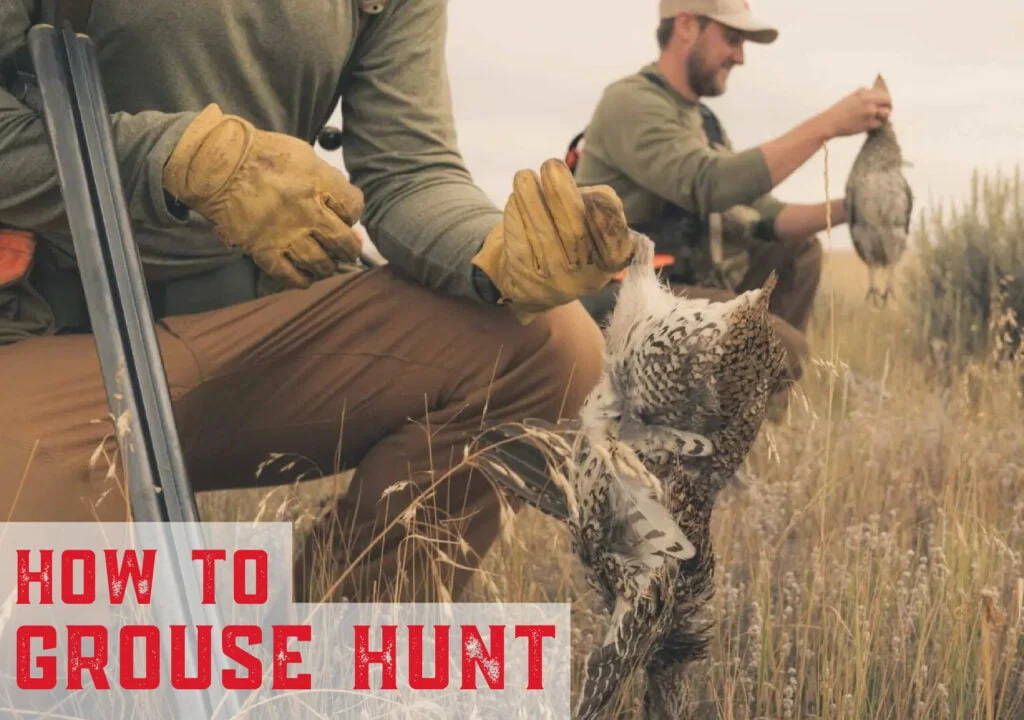How to Grouse Hunt: A Guide to Pursuing the Elusive Upland Game Bird

Table of Contents
Introduction
Calling all upland game hunters and outdoor enthusiasts! If you seek a thrilling and challenging pursuit in the wilderness, grouse hunting offers an exhilarating adventure. Grouse, known for their swift flights and elusive nature, provide an exciting challenge for hunters of all skill levels. In this comprehensive guide, we’ll walk you through the essential steps to become a successful grouse hunter, from selecting the right hunting gear and identifying grouse habitats to employing effective hunting techniques and ensuring safety in the field. So, let’s gear up and venture into the woods for an unforgettable grouse hunting experience!
1. Know Your Grouse: Species and Characteristics
Ruffed Grouse (Bonasa umbellus)
Forest Dwellers
Ruffed Grouse, also known as partridge, thrive in wooded habitats, favoring mixed forests with young growth, shrubs, and underbrush.
Camouflaged Plumage
The mottled brown and gray plumage of Ruffed Grouse provides excellent camouflage, making them challenging to spot amidst the forest floor.
Distinctive Drumming Display
During the mating season, male Ruffed Grouse create a mesmerizing drumming sound by rapidly beating their wings, a display that attracts females and asserts their territory.
2. Selecting the Right Gear
Shotguns and Ammunition
For grouse hunting, a lightweight shotgun in 20 or 12-gauge is ideal for maneuvering through dense cover. Opt for smaller shot sizes, such as No. 7.5 or No. 8, for more effective shots at close range.
Hunting Clothing and Boots
Wear clothing in earthy tones to blend with the forest environment. Sturdy hunting boots with good traction are essential for navigating uneven terrain.
Safety Equipment
Don’t forget to wear blaze orange or other highly visible clothing to enhance safety and visibility to other hunters in the field.
3. Identifying Grouse Habitats
Seek Young Forests
Grouse are often found in young forests or areas with early successional growth, where they can find a variety of food sources and cover.
Edge Habitats
Look for edges between different habitat types, such as where mature forests meet clearings, as these transitions provide ideal locations for grouse to feed and seek cover.
4. Hunting Techniques
The Walk and Stop Method
A common grouse hunting technique involves walking through the woods for short distances, then pausing to stand quietly for a few minutes. This allows grouse to feel at ease and resume their normal activities, potentially flushing within range.
Flushing Dogs
Well-trained flushing dogs, such as English Setters and Pointers, can be valuable assets in locating and flushing grouse from cover.
Silent Approach
Move quietly and deliberately through the woods, as grouse are easily spooked by sudden movements and loud noises.
5. Timing Your Hunt
Early Morning and Late Afternoon
Grouse are most active during the early morning and late afternoon, making these the prime hunting hours.
Fall Season
The fall season, specifically September through November, is the best time to hunt grouse, as they are more active and accessible during this period.
6. Ethical Hunting Practices
Safety First
Always prioritize safety while hunting grouse. Be aware of your surroundings, and avoid shooting at low-flying birds or in the direction of other hunters.
Respect Wildlife and Habitat
Adopt ethical hunting practices by respecting wildlife and their habitats. Follow all hunting regulations and adhere to bag limits to ensure sustainable hunting.
Conclusion
Grouse hunting is a challenging and rewarding pursuit that immerses hunters in the beauty of the wilderness. By understanding grouse behavior, selecting the right gear, identifying ideal habitats, and employing effective hunting techniques, you can enhance your chances of a successful and unforgettable grouse hunting experience. As you venture into the woods, savor every moment spent in nature and embrace the thrill of the hunt as you seek out the elusive and majestic grouse.
FAQs (Frequently Asked Questions)
1. Are there different species of grouse besides the Ruffed Grouse? Yes, there are several species of grouse found in various regions, including the Spruce Grouse, Sage Grouse, and Sharptail Grouse, among others.
2. Can grouse be hunted in public lands, or are they mainly found on private properties? Grouse can be found in both public lands and private properties, depending on the region and habitat. Always check local hunting regulations and obtain necessary permits before hunting on public lands.
3. What is the average range for shooting grouse with a shotgun? Grouse are typically flushed at relatively close ranges, often within 20 to 30 yards. However, this can vary based on the cover and terrain.
4. How can I improve my ability to identify grouse habitats while scouting? Learning to identify specific habitat features, such as young forests and edge habitats, is key. Spending time in the field, observing grouse behavior and their preferred environments, will help you become more proficient in identifying their habitats.
5. Can grouse hunting be done alone, or is it better to hunt in a group? Grouse hunting can be enjoyed both solo and in a group. Hunting in a group can provide a more social experience and enhance safety in the field. However, solo hunting allows for a more intimate connection with nature and a quieter approach to flushing grouse.







